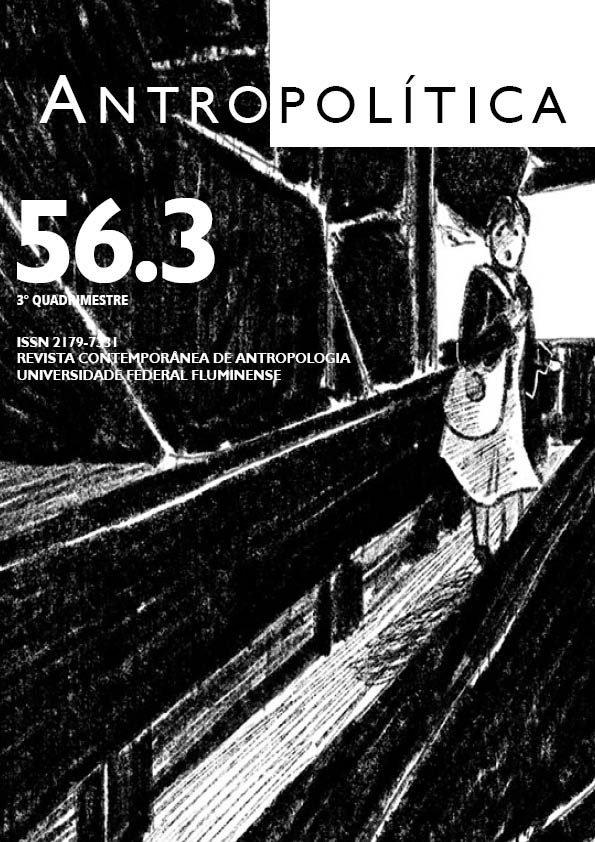The content of Ayatollah Sistani’s charismatic authority: the affective bond
DOI :
https://doi.org/10.22409/antropolitica2024.v56.i3.a61528Mots-clés :
Sistani, Affective Bond, Charismatic Authority, Trust, Perceptions.Résumé
Historically, Ayatollah Sistani’s calls to action have mobilised hundreds of thousands and even millions of his followers into different forms of political mobilisation in the post-2003 Iraqi context (e.g. voting, demonstrations, and armed jihad). A fundamental reason for this is his charismatic authority. Pre-existing literature on Sistani’s charisma has salient shortcomings in providing a conceptually coherent framework to capture how the Ayatollah inspires Weberian ‘absolute trust’ in his religio-political leadership. The present research seeks to compensate for this by offering an alternative approach to understanding Sistani’s charisma, which is informed by 40 semi-structured interviews conducted in 2022 with his followers and other seminary and academic personalities in Iraq. The content of his charismatic authority is referred to as the ‘affective bond’, which is a cognitive-emotional connection between the followers and Sistani premised on the former’s recognition of him as a symbol of legitimacy, hope, and authenticity. These perceptions confirm the ‘absolute trust’ that followers have in Sistani, which becomes the cognitive basis of their emotional willingness to answer his calls to action. In undertaking the mission of this paper, the intimate interplay between narratives, history, culture, rituals, practices, history, storytelling, and the perceptions that produce Sistani’s charismatic authority, will come to light.
Téléchargements
Références
ADLER, Patricia; ADLER, Peter. Expert Voices. In: BAKER, Sarah; EDWARDS, Rosalind. How many qualitative interviews is enough. Discussion Paper. NCRM, p. 8-11, 2012.
AL-‘ATABA AL-‘ABASIYYA AL-MUQADASA. Mawsu‘at Fatwa al-Difa‘ al-Kifa’i Khutab al-Jum‘a al-Khassa Bil-Tawaturat al-’Amniyya. Volume 6. Karbala: al-‘Ataba al-‘Abbasiyya al-Muqadasa, 2020.
Al-HAKIM, Riyadh. The Shia: Identity Persecution Horizons. Qom: Dar al-Helal, 2015.
AL-KHAFFAF, Hamed. Al-Rihla Al-‘Ilajiya Lisamahat al-Sayyid al-Sistani Dam Zilah Wa Azmat Al-Najaf Sanna 1425 Hijri – 2004 Miladi. Beirut: Al-Mouarekh, 2012.
ALSHAMMARY, Marsin. Prophets and Priests: Religious Leaders and Protest in Iraq. 2020. Thesis (PhD in Political Science) – Massachusetts Institute of Technology, Massachusetts, 2020.
AL-QARAWEE, Harith. The ‘formal’ Marja‘: Shi‘i clerical authority and the state in post-2003 Iraq. British Journal of Middle Eastern Studies, Oxfordshire, v. 46, n. 4, p. 481-497, 2019. Available at: https://www.tandfonline.com/doi/epdf/10.1080/13530194.2018.1429988?needAccess=true&role=button. Accessed on: Nov. 1, 2023.
ALSAYEGH, Ali. Emotional Entrepreneurism (EE): The Case of Grand Ayatollah Sayyid ‘Ali al-Husayni al-Sistani. 2024. Thesis (PhD in Middle East Politics) – University of Exeter, Exeter, 2024.
BHOJANI, Ali-Reza; CLARKE, Morgan. Religious Authority beyond Domination and Discipline: Epistemic Authority and Its Vernacular Uses in the Shi‘i Diaspora. Comparative Studies in Society and History, Cambridge, v. 65, n. 2, p. 272-295, 2023.
CARUSO, Antonella. Sayyid Ali Husayn Sistani: Revitalising the Najaf Maraja‘iyya in post-2003 Iraq. CIDOB Barcelona Centre for International Affairs, Barcelona, p. 1-10, 2020. Available at: https://www.cidob.org/sites/default/files/2024-09/DOCUMENTS%20CIDOB_09_Antonella%20Caruso.pdf. Accessed on: Oct. 28, 2023.
COLE, Juan. The Decline of Grand Ayatollah Sistani’s Influence in 2006-2007. Berliner Wissenschafts-Verlag, Berlin, v. 82, n. 2/3, p. 67-83, 2007.
GLEAVE, Robert. Conceptions of Authority in Iraqi Shi’ism: Baqir al-Hakim, Ha’iri and Sistani on Ijtihad, Taqlid and Marja’iyya. Theory, Culture and Society, London, v. 24, n. 2, p. 59-78, 2007.
HAIDARI, Anwar. The Minber and the State: Reading in the Friday’s political sermons first part 2004. Karbala: Karbala Center for Studies and Research, 2021.
ISAKHAN, Benjamin. The Islamic State Attacks on Shia Holy Sites and the “Shrine Protection Narrative”: Threats to Sacred Space as a Mobilization Frame. Terrorism and Political Violence, Oxfordshire, v. 32, n. 4, p. 724-748, 2020. Available at: https://www.tandfonline.com/doi/full/10.1080/09546553.2017.1398741. Accessed on: Nov. 2, 2023.
KATZMAN, Kenneth. Iraq: Government Formation and Benchmarks. CRS Report for Congress, Washington D.C., p. 1-7, 2007.
RIZVI, Sajjad. The Making of a Marja‘: Sīstānī and Shiʿi Religious Authority in the Contemporary Age. Sociology of Islam, Leiden, v. 6, n. 2, p. 165-190, 2018. Available at: https://brill.com/view/journals/soi/6/2/article-p165_165.xml?language=en. Accessed on: Nov. 1, 2023.
SAYEJ, Caroleen. Patriotic Ayatollahs. London: Cornell University Press, 2018.
SAYEJ, Caroleen. Ayatollah Sistani: Much More Than a “Guide” for Iraqis. Project on Middle East Political Science, Washington DC, p. 22-28, 2019. Available at: https://pomeps.org/ayatollah-sistani-much-more-than-a-guide-for-iraqis. Accessed on: Oct. 29, 2023.
VALDES, Nelson. The Revolutionary and Political Content of Fidel Castro’s Charismatic Authority. In: BRENNER, Philip; JIMENEZ, Marguerite; KIRK, John; LEOGRANDE, William (ed.). A Contemporary Cuba Reader Reinventing the Revolution. Lanham: Rowman & Littlefield Publishers, INC, 2008. p. 27-40.
VISSER, Reidar. Sistani, the United States and Politics in Iraq. From Quietism to Machiavellianism? Norwegian Institute of International Affairs, Oslo, n. 700, p. 1-37, 2006.
WEBER, Max. Economy and Society. v. 2. Berkley: University of California Press, 1978.
WEBER, Max. The Theory of Social and Economic Organization. London: William Hodge and Company Limited, 1947.
ZARGAR, Cameron. The Legal and Spiritual Authority of the Marāji‘. 2020. Thesis (PhD in Islamic Studies) – University of California, Los Angelos, 2024.
Téléchargements
Publiée
Numéro
Rubrique
Licence
(c) Copyright Ali Alsayegh 2024

Ce travail est disponible sous la licence Creative Commons Attribution 4.0 International .
O conteúdo da revista Antropolítica, em sua totalidade, está licenciado sob uma Licença Creative Commons de atribuição CC-BY (http://creativecommons.org/licenses/by/4.0/deed.pt).
De acordo com a licença os seguintes direitos são concedidos:
- Compartilhar – copiar e redistribuir o material em qualquer suporte ou formato;
- Adaptar – remixar, transformar, e criar a partir do material para qualquer fim, mesmo que comercial;
- O licenciante não pode revogar estes direitos desde que você respeite os termos da licença.
De acordo com os termos seguintes:
- Atribuição – Você deve informar o crédito adequado, fornecer um link para a licença e indicar se alterações foram feitas. Você deve fazê-lo em qualquer maneira razoável, mas de modo algo que sugira que o licenciante o apoia ou aprova seu uso;
- Sem restrições adicionais — Você não pode aplicar termos jurídicos ou medidas de caráter tecnológico que restrinjam legalmente outros de fazerem algo que a licença permita.


